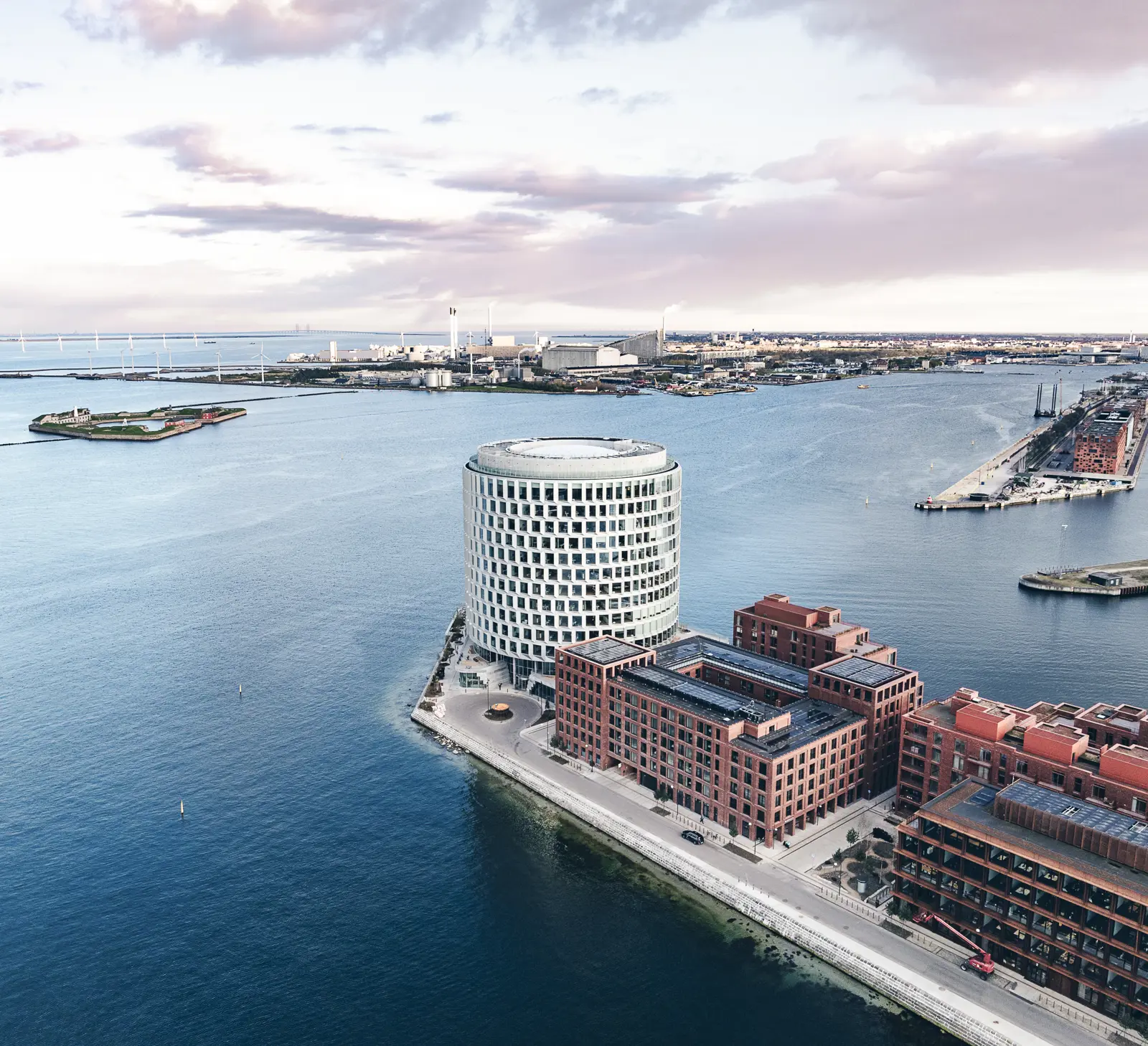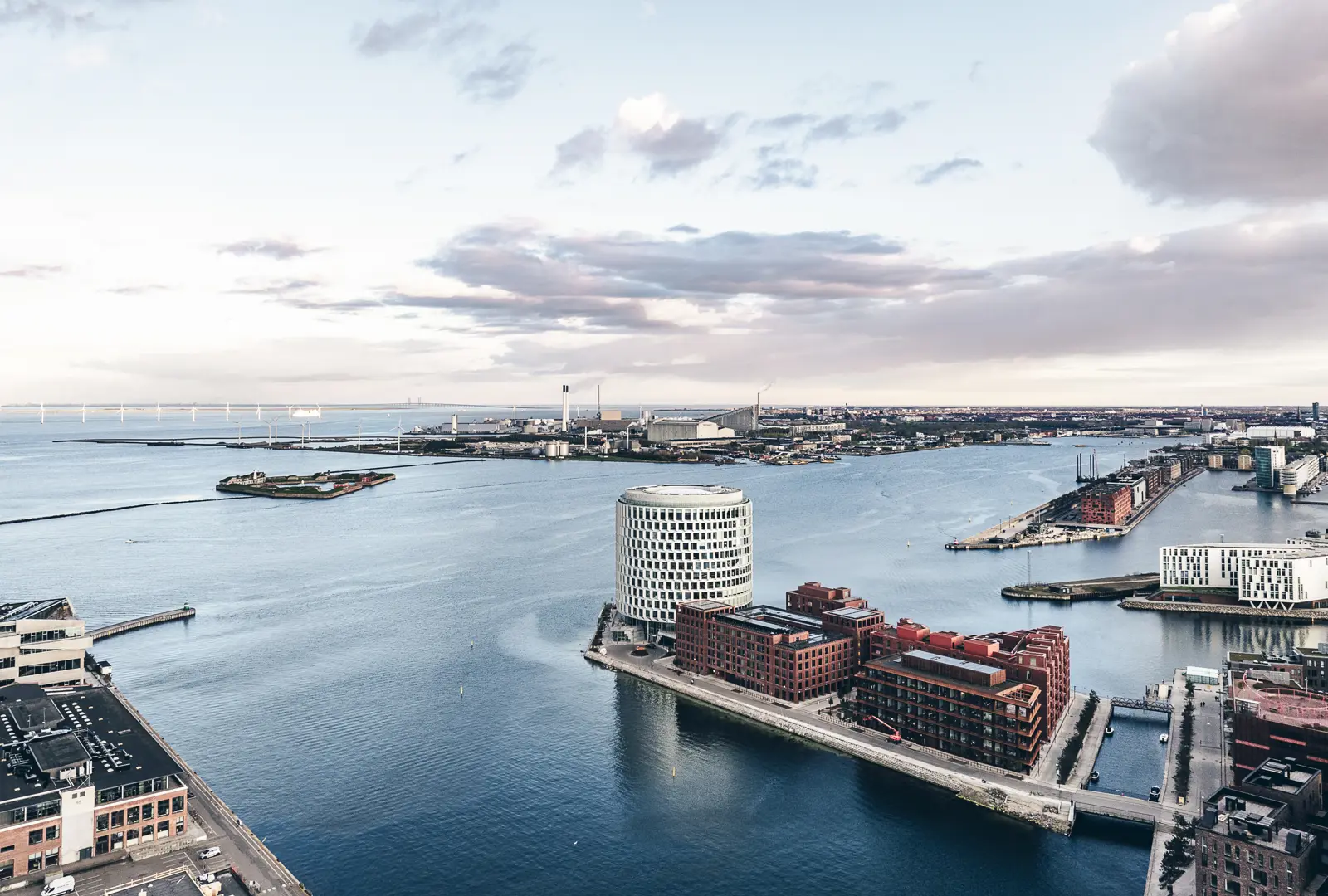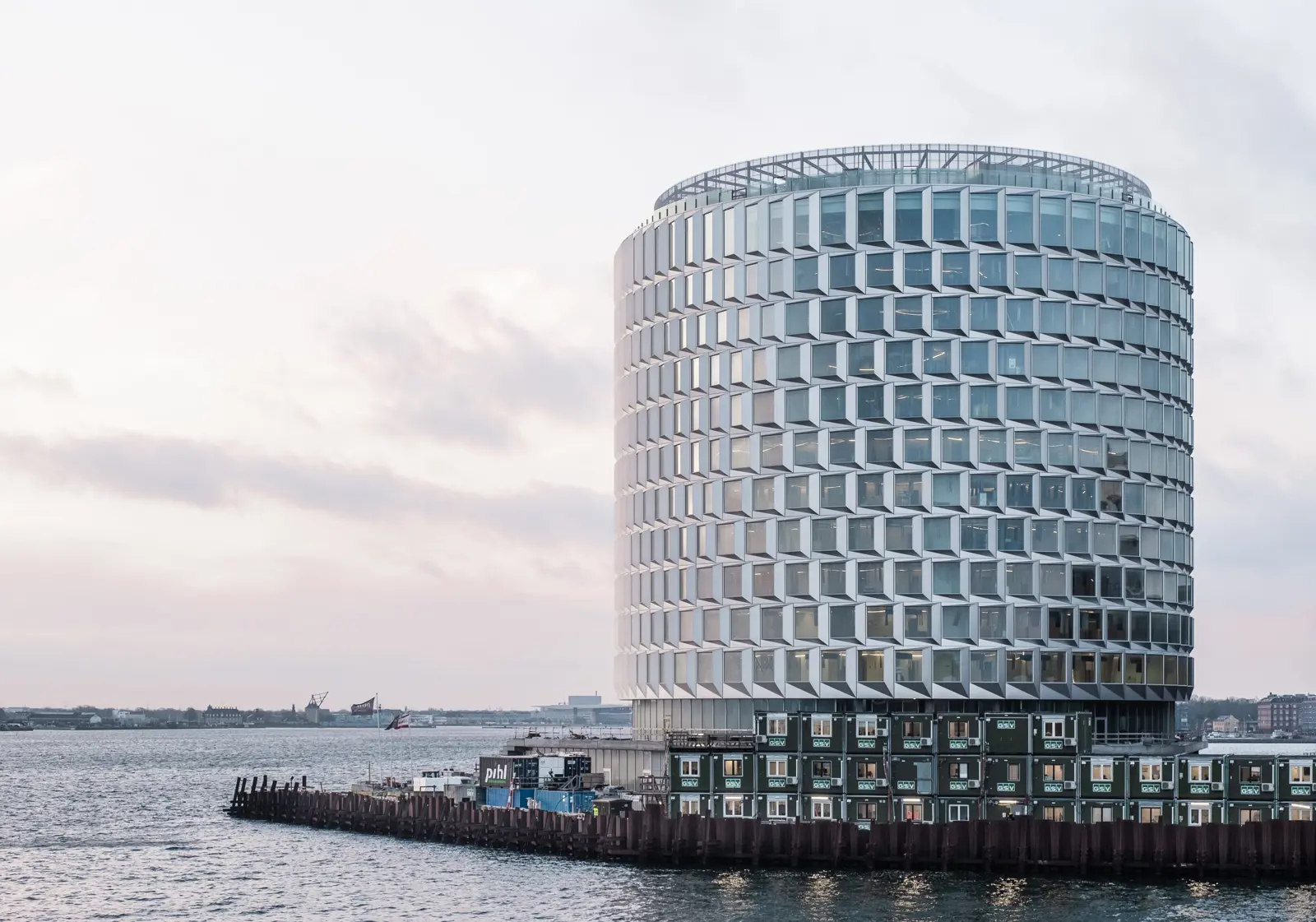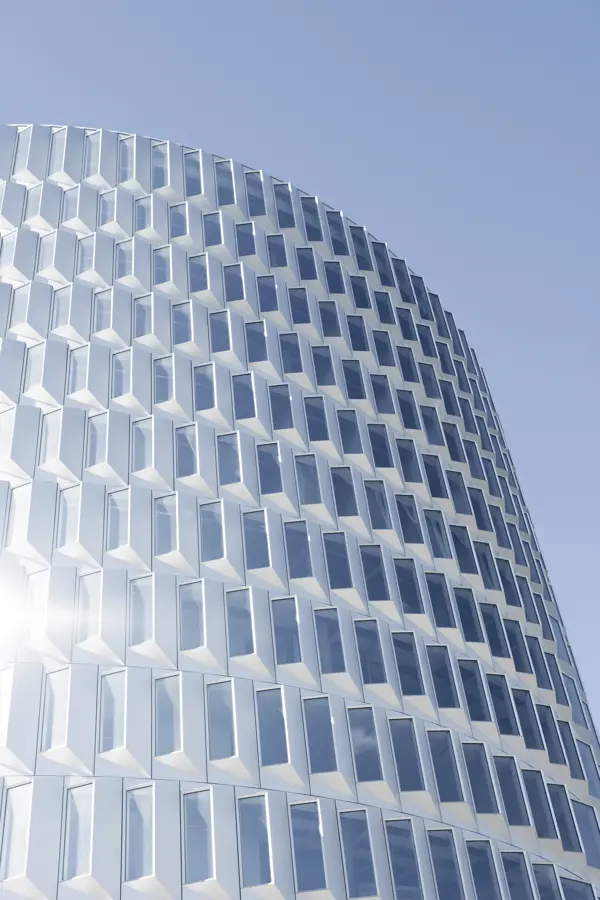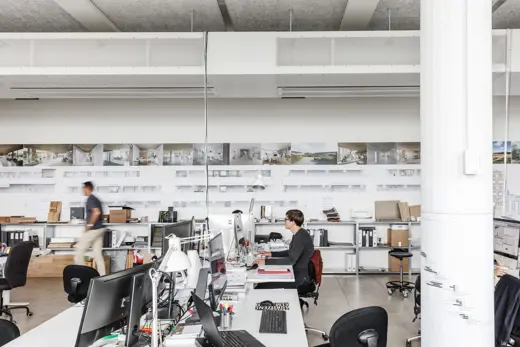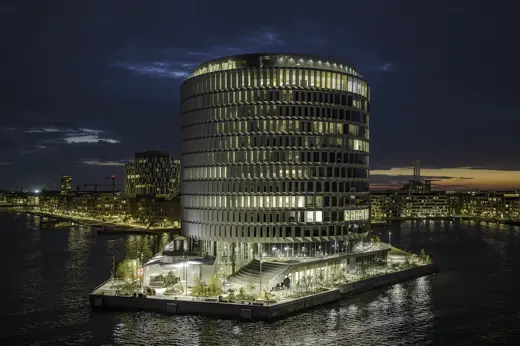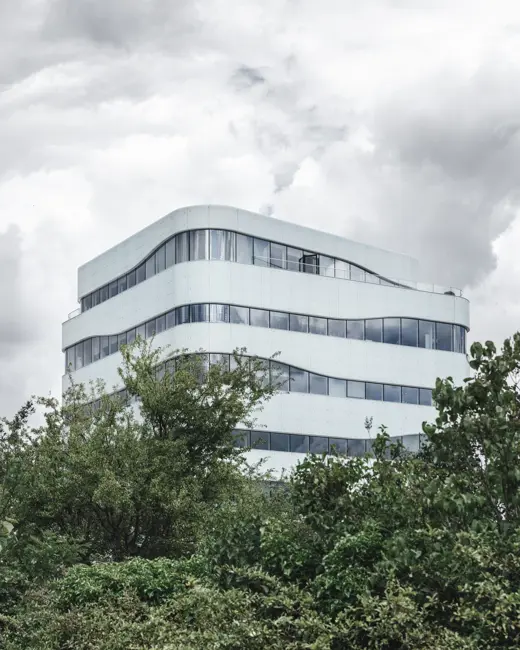
Tip of Nordø
-
Client
PFA Ejendomme
-
Collaborators
Cobe, Tredje Natur, Rambøll, Pihl & Søn
-
Location
Gdanskgade 16, DK-2150 Copenhagen
-
Area
26,000 m2
-
Status
Completed in 2023
-
Award
Archello Building of the Year - Public Vote Winner (2024), Archello Office Building of the Year - High Rise Tower - Jury Winner (2024), Archello Office Building of the Year - High Rise Tower - Public Vote Winner (2024)
-
Competition
First Prize
-
Sustainability Certification
DGNB Gold

Commercial
A democratic landmark where sky and sea meet the city
With a height of 60 metres, the tip of Nordø is Copenhagen’s new landmark – a contemporary beacon of an impressive scale at the entrance to Copenhagen harbour. The functional design is based on an annual, hour-by-hour weather simulation to strategically position the faceted elements in a way that reduces the direct influx of sunlight.
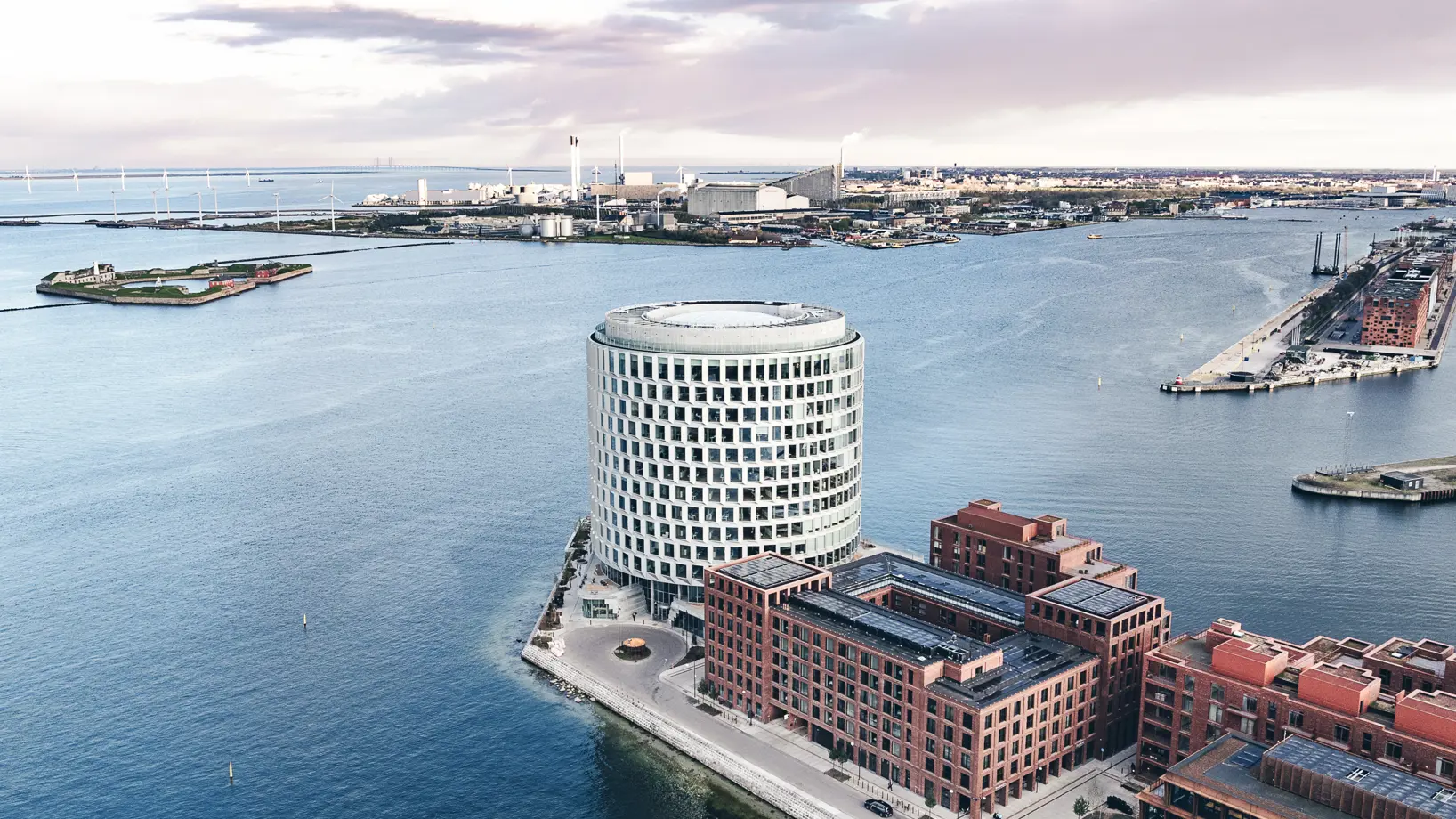
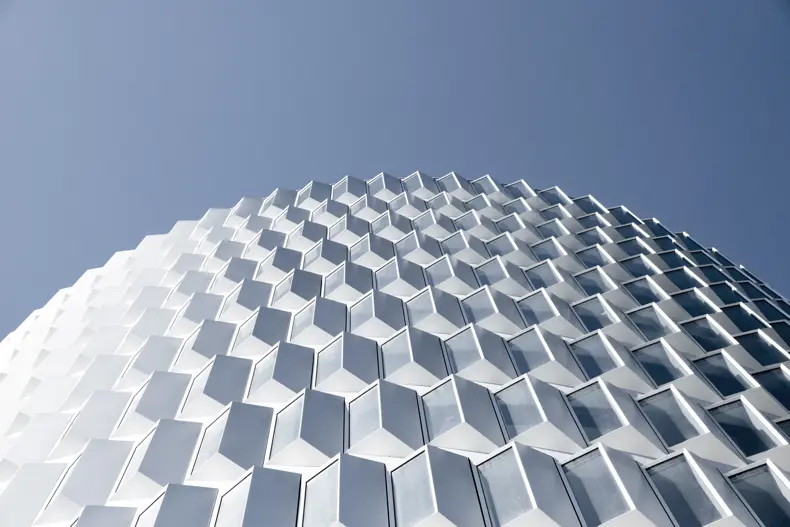
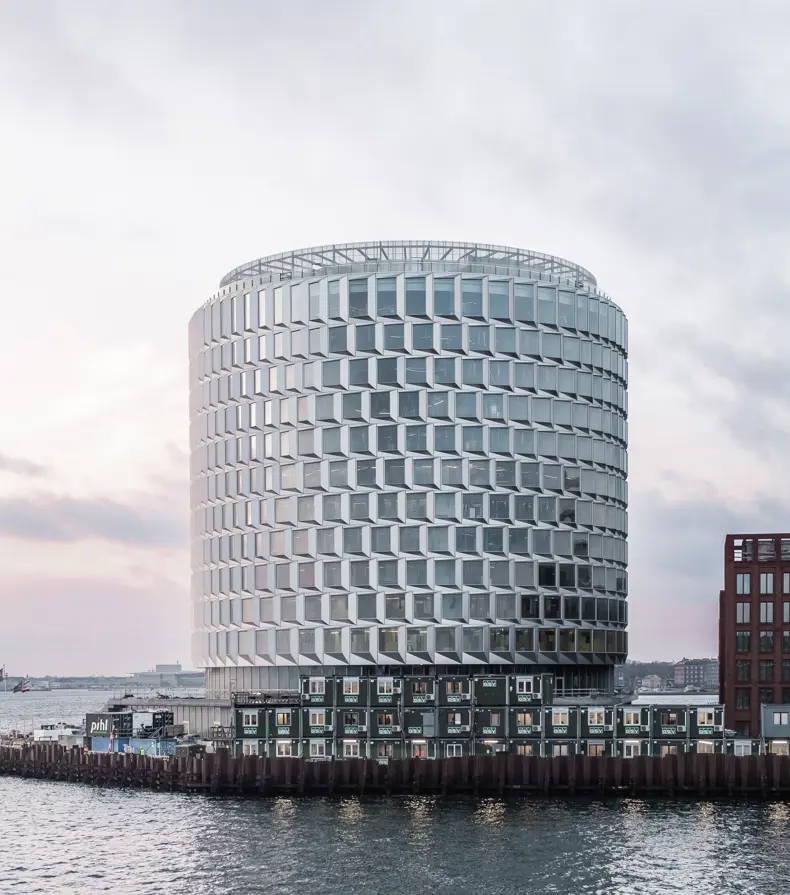






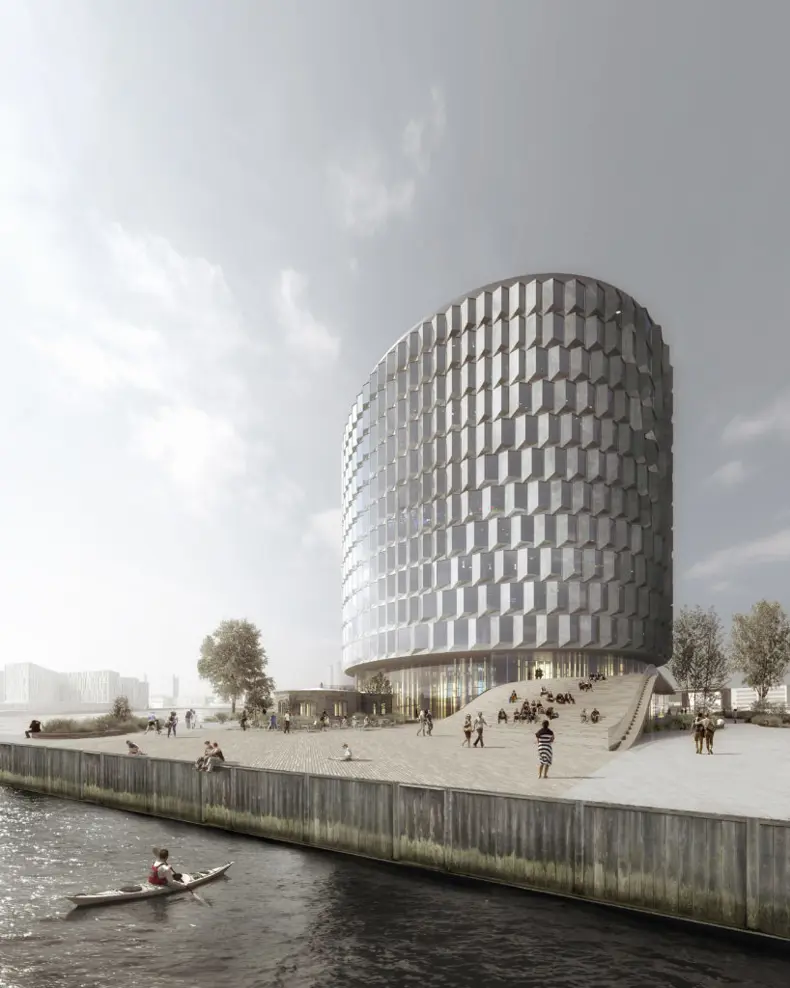
View from the harbour's edge - from the competition proposal
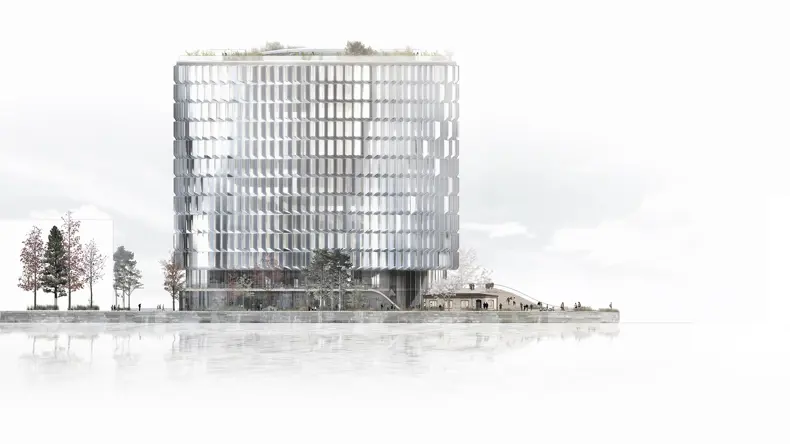
Southern elevation - from the competition proposal

© Drone Rune, courtesy of PFA © Drone Rune, courtesy of PFA

© PFA - Foto Drone Rune
‘It is designed to be visible from all sides without a front or back. Buildings in this context should not have backsides. It causes an imbalance.’
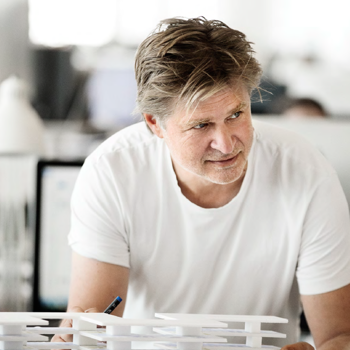

Winter visualization of the harbour entry to Nordhavn - from the competition proposal



Other projects

